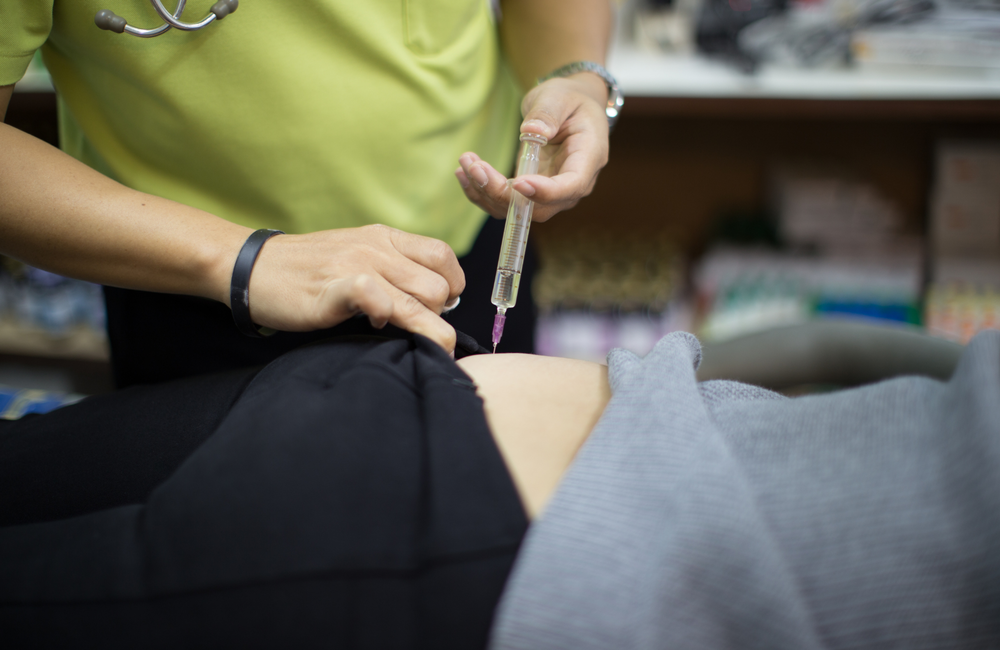
A detailed analysis of HIV infections seen in HPTN 084, the study comparing the effectiveness of injectable versus oral HIV pre-exposure prophylaxis (PrEP) in cisgender women, has been published in the Journal of Infectious Diseases. Headline findings were reported in November 2020 when the study was stopped early due to the clearly superior effectiveness of the injections.
The publication follows hard on the heels of detailed efficacy results from the randomised and open-label phases of its companion study in gay and bisexual men and trans women, HPTN 083, which were announced during last month’s Conference on Retroviruses and Opportunistic Infections.
The data shows that for cis women injected PrEP is more effective than oral PrEP, due to it being easier to adhere to, than the pills.
But it also suggests it may be more intrinsically efficacious too. This is partly because drug concentrations in vaginal tissue need stricter adherence – in the order of six to seven doses a week – than in rectal tissue, where four doses a week are sufficient. So less-than-stringent adherence to pills poses more of a problem for vaginal sex.
But it is also that, whereas in HPTN 083 there were a handful of unexplained ‘breakthrough’ infections in people who appeared to have adequate drug levels and good adherence on cabotegravir, there were no similar ones in HPTN 084.
The net result is that injectable PrEP was, in this study, 92% more effective than oral PrEP. Such a conclusive result may increase the pressure to make it swiftly available for women in all parts of the world.
Results in more detail
We already know that the superior effectiveness of injectable PrEP was even more marked in HPTN 084 (the women's study) than HPTN 083 (which recruited gay and bisexual men and trans women). The latter study found that injectable cabotegravir stopped 66% more HIV infections than daily tenofovir disoproxil fumarate/emtricitabine (TDF/FTC) pills. But in HPTN 084 it was originally announced that the injections stopped 88% more.
The updated results now show that one of the four HIV infections in women allocated to cabotegravir injections occurred before she entered the study, so cannot be counted as an infection on cabotegravir. In addition another infection in women allocated to TDF/FTC has been found, totalling 36. This suggests that the injections were 92% more effective than the pills.
This effectiveness was largely driven by adherence. When blood samples were taken from participants taking oral TDF/FTC to assess adherence, it was found that 74% of people in HPTN 083 had levels consistent with good adherence, compared to a maximum of 46% of the women in HPTN 084 (levels inside cells suggested even lower adherence).
Drug levels were not measured in the same way in women receiving cabotegravir injections, but 93% of injections given were either on time or no more than two weeks late, which was used as a proxy indicator of sufficient drug levels.
HPTN 084 enrolled 3224 cisgender women in seven African countries – Botswana, Eswatini, Kenya, Malawi, South Africa, Uganda and Zimbabwe. A description of the study can be found here. As with HPTN 083, it began with a five-week ‘lead-in’ of pills, as a safety precaution. Then subjects took either cabotegravir injections (once every two months after the second injection) plus placebo pills, or took TDF/FTC pills daily plus dummy injections.
Infections on TDF/FTC
There were 36 infections in women allocated to TDF/FTC. In all but one of these, blood plasma drug levels suggested that the women took none or very few of the pills. There was one HIV infection in a woman whose drug levels were just under the 40 nanograms per millilitre (ng/ml) level regarded as the threshold for efficacy, but levels taken both before and after her date of infection suggested inconsistent adherence.
She was also the participant with the longest gap between her infection being detected during routine antigen/antibody (ag/ab) testing at her local clinic, and her actual date of infection as determined by sensitive, retrospective RNA testing at the study centre. Her first positive RNA result, with an HIV viral load of 71, was 11.7 weeks prior to her positive ag/ab result, and she had had two intervening study visits where it was not detected.
Seven other women were also found to have had positive RNA test results prior to their positive ag/ab result. This included another three whose HIV was not detected at a previous, intervening study visit. The three women also turned out to initially have very low levels of HIV RNA. These results strengthen the evidence gathered from HPTN 083 and other PrEP studies that while sub-optimal adherence to PrEP may not be enough to prevent HIV, it may result in a ‘blunted’ HIV infection that is difficult to detect.
Infections on cabotegravir
As for the four infections seen in women allocated to cabotegravir: in one case, it was eventually found that the participant had HIV at the time she joined the study. There was a long gap – 32 weeks, at the time of her fifth injection – between her entering the study and having a positive ag/ab result. Retrospective RNA testing eventually found she had been infected at baseline, but with a very low viral load of 21 copies. Her viral load rose to 6500 copies at the time of her first PrEP injection, but the cabotegravir then appeared to suppress her HIV back to viral undetectability again.
Two women allocated to cabotegravir never actually took the drug. One attended her first injection appointment after her initial visit seven weeks late and had not taken the ‘lead-in’ cabotegravir pills. She tested HIV positive at that point. Another stopped cabotegravir when she became pregnant soon after entering the study and was given TDF/FTC pills instead, but then attended irregularly and had drug levels indicating no or poor adherence. She eventually tested HIV positive at week 57.
This left one participant who, though she did not take the lead-in pills, did receive nine cabotegravir injections. Before testing HIV positive, however, she missed one injection and at the time of her positive test had blood plasma drug levels of about 250 micrograms per millilitre, which is less than a quarter of the level regarded as offering full protection. (The average half-life of injectable cabotegravir – the time it takes for levels to fall by 50% - is 8.6 weeks.)
Significantly, and unlike some of the participants in HPTN 083, no-one in HPTN 084 who tested HIV positive acquired drug resistance to cabotegravir or its class, and only one woman taking TDF/FTC had the M184V resistance mutation to emtricitabine. However nine women had HIV with pre-existing resistance to the non-nucleoside (NNRTI) class of drugs, showing that this is common among people with HIV in Africa.
Conclusions and next steps
The researchers, led by Professor Susan Eshleman and colleagues at Johns Hopkins University in Baltimore, note: “In HPTN 084, none of the cisgender women in the cabotegravir arm acquired HIV infection while receiving on-time injections. In contrast, in HPTN 083, four participants with incident infection in the cabotegravir arm were infected despite on-time injections with expected drug concentrations.”
HPTN 084 is continuing into an open-label study in which all participants will be offered cabotegravir injections. If HIV RNA testing had been available in the randomised study, all infections where there was a delay between infection and a positive ag/ab test would have been detected sooner, so RNA testing will be used monthly in the open-label study. However as routine RNA testing would be more expensive, this is being done with an eye to calculating its cost-effectiveness in everyday use.
Eshleman SA et al. Characterisation of human immunodeficiency virus (HIV) infections in women who received injectable cabotegravir or tenofovir disoproxil fumarate/emtricitabine for HIV prevention: HPTN 084. Journal of Infectious Diseases, early online publication, 18 March 2022.

